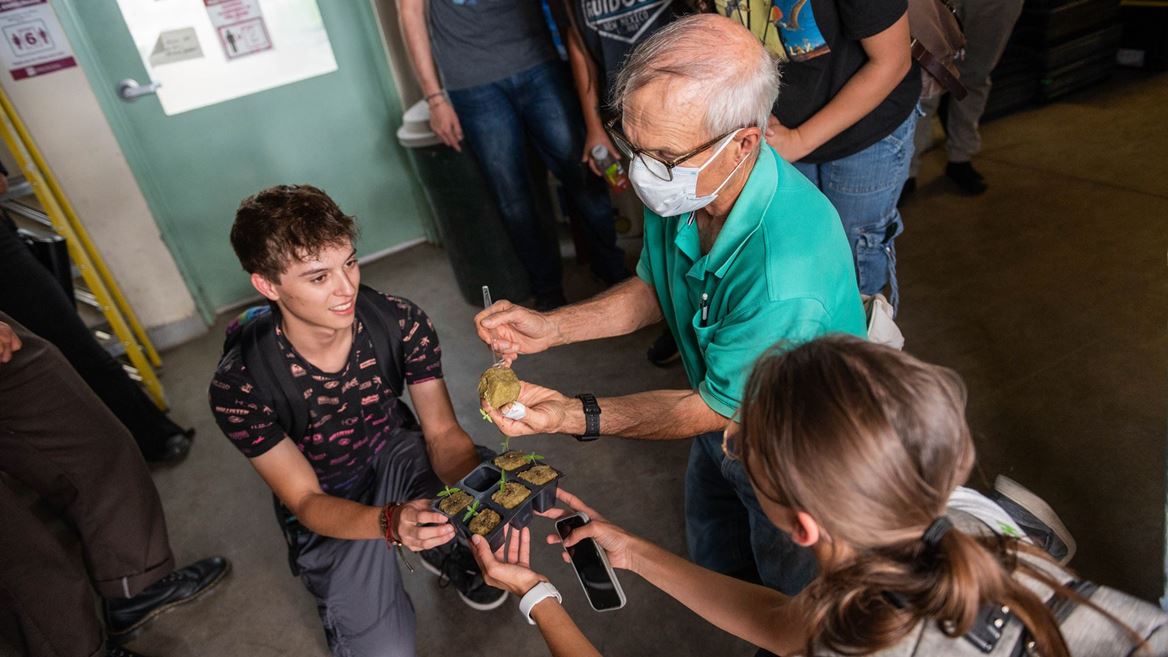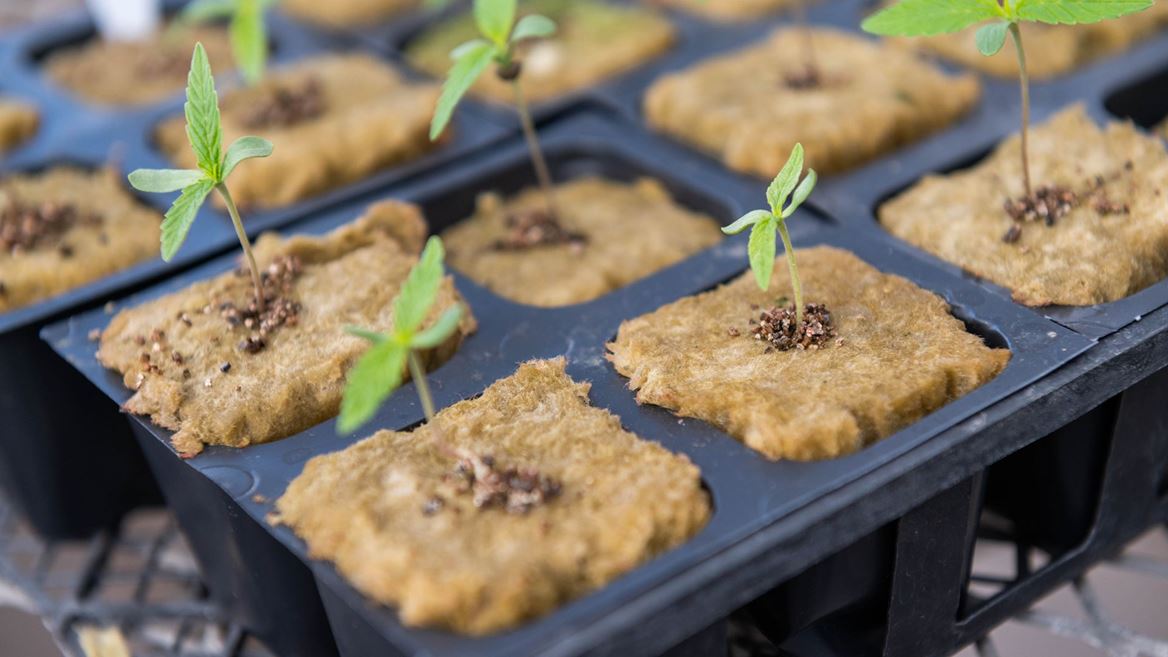Las Cruces, New Mexico, USA
November 8, 2022

Geno Picchioni, plant and environmental professor at New Mexico State University, center, works with students in his class at the Fabián García Science Center. Picchioni’s course focuses on the principles and practices involved in greenhouse structures and construction, site considerations, heating and cooling systems, greenhouse crop production techniques and sustainability practices. (NMSU photo by Josh Bachman)
With the legalization of hemp production nationwide in 2018, New Mexico State University students in the greenhouse management course now have the chance to gain hands-on experience with the plant.
Two years ago, Geno Picchioni, plant and environmental sciences professor in the College of Agricultural, Consumer and Environmental Sciences at NMSU, added a greenhouse hydroponic hemp cultivation module to his course, and students in his fall 2022 class delved into the topic.
The four-hour course focuses on the principles and practices involved in greenhouse structures and construction, site considerations, heating and cooling systems, greenhouse crop production techniques and sustainability practices.
“They were interested in seeing hemp in their own greenhouse as most didn’t have any hemp-growing experience,” Picchioni said.
“It’s great to have the opportunity to learn about it in an instructional environment meant for learning and education,” said Sarah Granio, an agriculture and extension education senior. “It’s something we can learn about and be upfront about how it grows, how fast it grows, what to avoid – different things like that. I think that’s the coolest thing for me – being able to do it where it’s safe.”
Horticulture senior Tyra Murrill was interested to discover the deviations of growing hemp in hydroponics.

Hemp plants grown this fall by students in Geno Picchioni’s greenhouse management course. Picchioni, a professor of plant and environmental sciences, introduced a greenhouse hydroponic hemp cultivation module to his course in 2020. (NMSU photo by Josh Bachman)
“I think it’s really awesome that I can do it at home legally but also come to school and learn from a different sense – from soil to hydroponics,” Murrill said.
Even with its legality, hemp still poses challenges. Producers have to apply for a growing license through the New Mexico Department of Agriculture, and Picchioni added that taxonomy is another obstacle.
“For the most part, it’s one species and simpler than what the world seems to make it sometimes, i.e. Cannabis sativa,” Picchioni said. “If you say ‘cannabis,’ then in most cases, you are technically covering all of the cultivars, strains and end-uses, including medical, recreational, seed, oil, fiber and other industrial purposes.”
Students believe hemp’s reputation is improving.
“I think it’s cool that it’s not such a taboo thing anymore, and we get to learn about it in school because it is a plant and it’s a science,” said Rhiannon Rodriguez, a horticulture senior. “It’s a very versatile plant. I’m excited to see what we grow and learn about all the things we can do with it.”
While hemp and marijuana come from the same cannabis plant, hemp doesn’t have the psychoactive effects associated with tetrahydrocannabinol, also known as THC. Hemp must contain less than 0.3% THC levels, while marijuana can contain more than 15%.
For centuries, hemp has been used in textile production. Modern uses of hemp span from fuels to plastics, but the majority of the hemp market is based on the production of cannabidiol, also known as CBD.
“The cannabis stigma made it difficult for some of the population to accept it, which historically tended to overshadow CBD biochemistry and the associated human health benefits. It has its own unique place in the medical world,” Picchioni said.
Getting the opportunity to learn about hemp in a classroom and greenhouse environment isn’t something Murrill takes for granted.
“I feel privileged to have the chance to work with hemp when older generations didn’t,” Murrill said. “We have an opportunity that others weren’t given. It’s really amazing.”
A version of this story was first published in the fall 2022 issue of ACES Magazine. To read the issue, visit https://aces-about.nmsu.edu/documents/ACESMagazine_FA22_web.pdf.